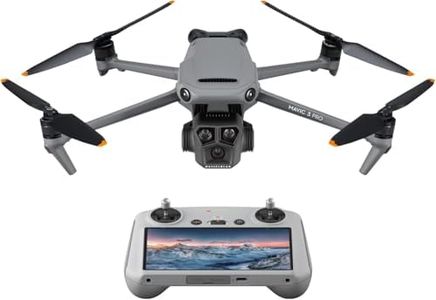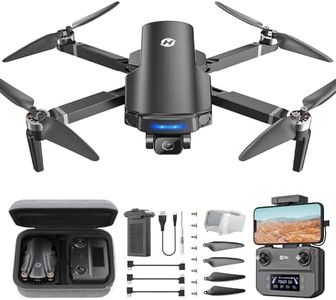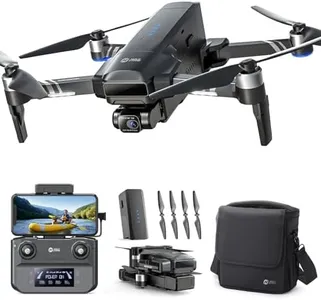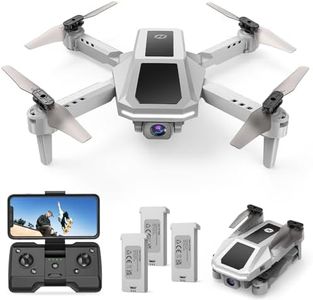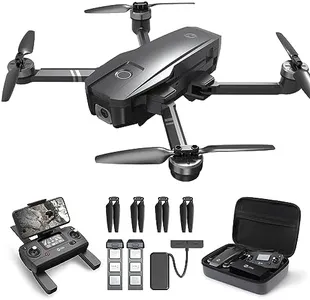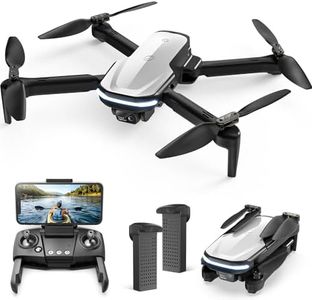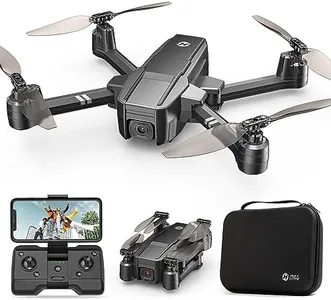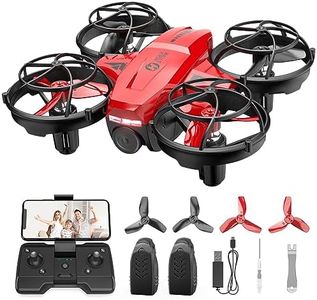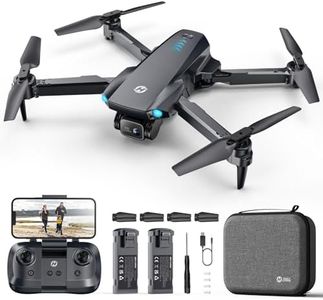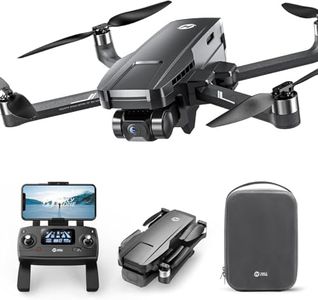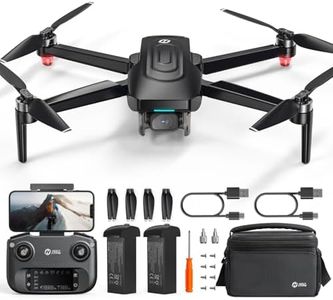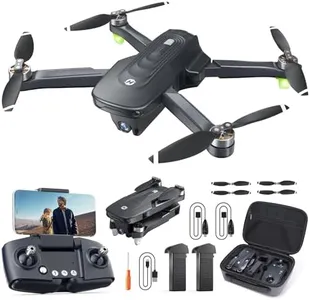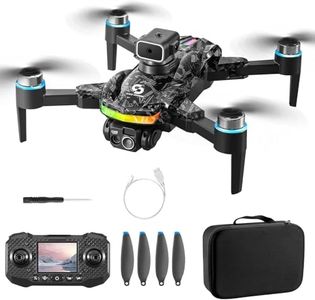We Use CookiesWe use cookies to enhance the security, performance,
functionality and for analytical and promotional activities. By continuing to browse this site you
are agreeing to our privacy policy
10 Best Photography Drones
From leading brands and best sellers available on the web.Buying Guide for the Best Photography Drones
Choosing the right photography drone can truly elevate your ability to capture stunning images and video from the sky. To find the best drone for you, it’s important to consider both the features of the drone and your own photography needs. Think about what type of photos and videos you want to create, the environments you’ll be flying in, and how experienced you are with flying drones. Focus on the key specifications, as these will guide you to a drone that matches your creative vision and skill level.Camera QualityCamera quality is one of the most important specs for photography drones because it directly affects the sharpness, color, and detail in your photos and videos. You’ll often see drones with sensors ranging from small to large, and resolutions from HD up to several dozen megapixels. For casual photography, a camera with at least 12 megapixels and 1080p video is usually sufficient. Enthusiasts and professionals may want higher resolutions, such as 20 megapixels or 4K video and beyond, which provide greater clarity and editing flexibility. Think about how you plan to use your images—will you print them, share them online, or shoot professional video? Choose a camera that meets those needs.
Flight TimeFlight time refers to how long the drone can stay airborne on a single battery charge. Most photography drones offer anywhere from about 15 to 40 minutes per flight. Shorter flight times are manageable for quick snapshots or short clips, while longer times are better for capturing extensive footage or exploring larger areas. If you need longer shoots or travel to remote places, prioritize drones with extended flight times, and consider if the battery is easily swappable to keep flying.
Gimbal StabilizationA gimbal is a device that keeps the drone’s camera stable even while the drone itself is moving. Good stabilization is essential for smooth, professional-looking video and sharp photos. Gimbals commonly come in two or three-axis variants. Two-axis gimbals are lighter and stabilize basic motions, while three-axis gimbals provide more comprehensive steadiness, especially important for video. If your top goal is high-quality video or photographing in breezy conditions, go for a drone with a three-axis gimbal for the best results.
Range and TransmissionTransmission range is how far your drone can fly from the remote control while maintaining a clear signal. Some drones are limited to a few hundred meters, while advanced models can go several kilometers. If you mostly fly close to yourself for selfies or simple shots, shorter ranges are fine. For landscape, real estate, or exploring vast areas, longer range offers more flexibility and safety, as you’re less likely to lose connection. Your intended shooting environment—urban, rural, or travel—should guide your choice.
Portability and SizePortability measures how easy it is to carry the drone. Some drones are compact and foldable, making them ideal for travel or outdoor adventures, while larger drones may offer better performance but are bulkier to transport. If you travel a lot or want to capture spontaneous shots, look for lightweight, foldable drones. If your work is mostly local and you need high-end features, larger drones may be worth the extra effort.
Obstacle AvoidanceObstacle avoidance refers to the drone’s ability to detect and avoid objects in its flight path using sensors. Basic drones may only have downward sensors for landing, while advanced drones are equipped with multiple sensors facing in different directions. If you’re new to flying or plan to shoot in complex environments (like forests or cities), choose a drone with multi-directional obstacle avoidance for added safety and confidence.
Ease of Use and Intelligent ModesEase of use covers how straightforward the drone is to fly and the presence of features like auto takeoff, landing, and intelligent flight modes (such as follow-me or orbit). Drones with user-friendly controls and pre-set modes help you focus on capturing great shots rather than mastering difficult controls. If you are a beginner or want to automate complex shots, prioritize drones with strong ease-of-use features and intelligent modes.

